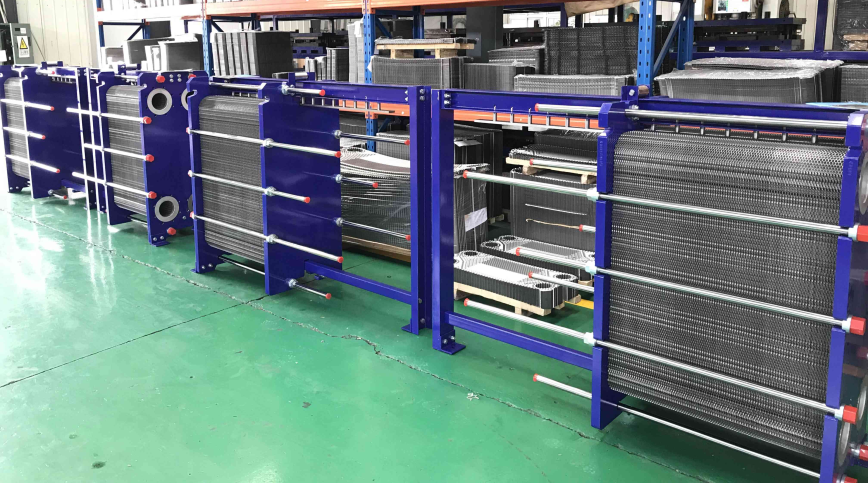
Plate heat exchangers are widely used in various industries due to their high heat transfer efficiency, compact size and ability to handle various types of fluids. However, to ensure long and trouble-free operation of such equipment, certain installation and maintenance rules must be followed.
Installation of the plate heat exchanger
Proper installation of the plate heat exchanger is the key to its efficient operation. The main installation steps include:
Foundation preparation: The foundation must be solid and level to ensure the stability of the heat exchanger during operation.
Connecting the connections: The heat exchanger tubes are connected to the pipework by flanges or welding. Make sure that the connections are tight.
Filling the heat transfer medium: Before starting up the heat exchanger, it must be filled with coolant, after removing the air from the system.
Checking for leaks: After filling the system with coolant, a thorough leakage check should be carried out.
Maintenance of the plate heat exchangers
Regular maintenance of the plate heat exchanger helps to extend its service life and avoid emergency situations. The main types of maintenance include:
- Inspection of the external condition: Regularly inspect the heat exchanger for damage, corrosion and other defects.
- Checking the tightness of connections: Regularly check all connections for leaks.
- Cleaning the heat exchanger: Periodically clean the heat exchanger to remove deposits and scale. This can be done using special chemicals or mechanical methods.
- Replace the gaskets: The heat exchanger gaskets wear out over time and need to be replaced.
- Repairing the plates: If the plates are damaged, they must be replaced.
Practical recommendations
- Follow the manufacturer’s recommendations: Always follow the manufacturer’s recommendations for installation, maintenance and operation of the heat exchanger.
- Use quality materials: Use only quality materials and components for the installation and repair of the heat exchanger.
- Ensure optimum operating conditions: Adhere to the recommended temperature and flow rates of the heat transfer media.
- Perform regular monitoring of the heat exchanger: Regularly monitor the inlet and outlet temperatures of the heat exchanger and the system pressure.
- Hire qualified professionals: Have qualified professionals install, maintain and repair the heat exchanger.
Conclusion
Proper installation and regular maintenance of the plate heat exchanger is the key to its long and trouble-free operation. Following these recommendations will help you avoid premature equipment failure and ensure efficient heat transfer in your system.